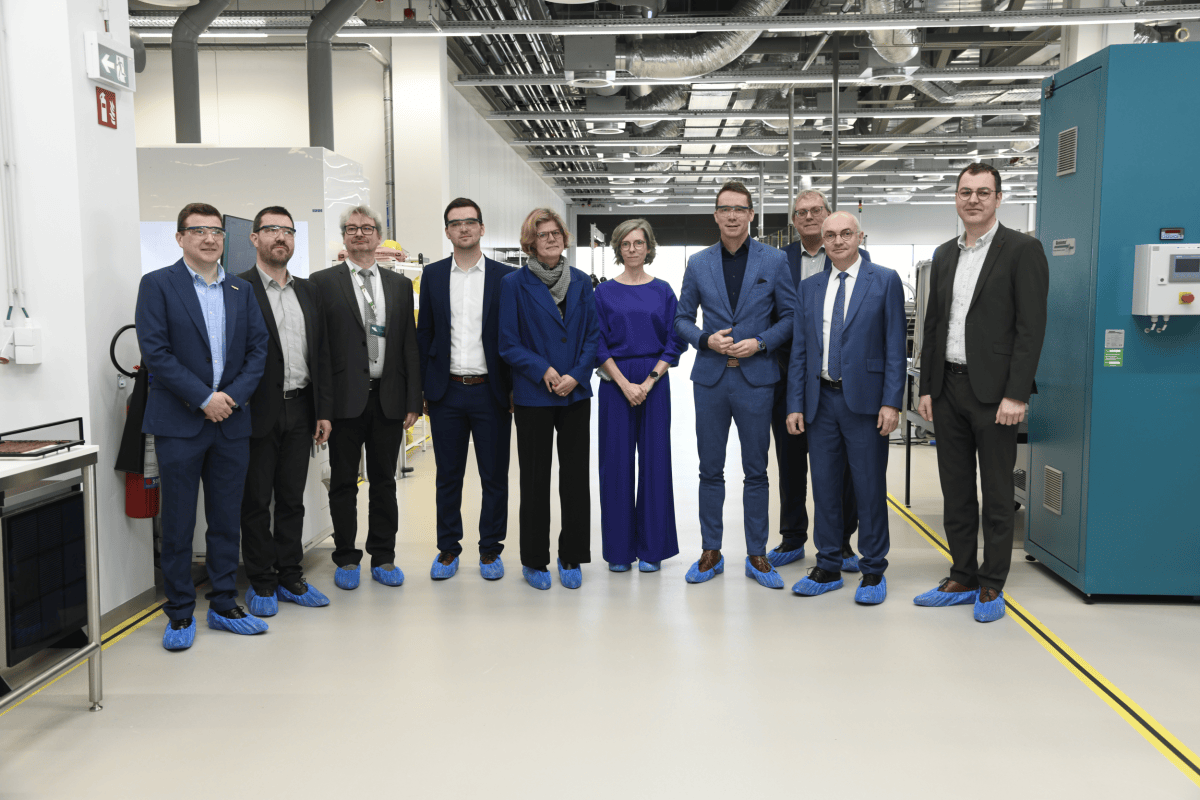New infrastructure for green hydrogen speeds up research
Genk, 25 March 2024 – Green hydrogen is crucial if the energy transition is to succeed. After all, hydrogen is needed for the greening of so-called hard-to-abate sectors such as heavy industry (steel, cement, chemicals), shipping, etc. For years, the EnergyVille partners, VITO, imec and UHasselt have been dedicating research to hydrogen. Flanders, too, worked out a hydrogen vision and, in the Flemish “Vlaamse Veerkracht” plan, earmarks investments for innovation in hydrogen. Today, the latest hydrogen infrastructure is being presented in Genk. The Flemish government invested 4.5 million euros for this through the Flemish relaunch plan “Vlaamse Veerkracht”.

Complementary research from three partners
The three EnergyVille partners VITO, imec and UHasselt are each focusing on research to make green hydrogen practically applicable on an industrial scale. Imec and VITO focus on upscaling components for electrolysis systems and characterisation equipment. Electrolysis systems are used for processes such as splitting water into oxygen and hydrogen using electricity. In turn, UHasselt focuses on new materials for the generation and use of hydrogen based on (electricity generated by) solar energy. The lab infrastructure is located in the EnergyVille labs in Genk and the Green Hydrogen Lab in Diepenbeek.
Technological innovations for more efficient and affordable hydrogen production
Imec invested the support in further development of their ‘nanomesh‘ material. This electrode material, composed of connected ‘nanowires’ to form a three-dimensional regular structure, has high porosity and an unrivalled reaction surface. Thanks to these unique material properties, it can significantly speed up innovations in energy applications, such as large-scale electrolysis for green hydrogen production. With the Vlaamse Veerkracht investment, a pre-pilot line for scaling up imec’s nanomesh material was designed and installed in EnergyVille’s labs for this purpose. Here, partners VITO, imec, Hyve and materials expert Bekaert will investigate how larger surfaces of the material can be produced in an affordable way.
During electrolysis, where water is split into hydrogen gas and oxygen gas on materials such as the ‘nanomesh’, it is crucial that the two gases remain separated. This can be done using a stable membrane – the thinner, the more efficient the process. Here, too, the research partners work together: VITO from their long tradition in membrane casting and imec with their developments of solid-state electrolytes for batteries.
Eventually, the scaled-up nanomesh material and the separation material will be placed together in a test reactor, where the renewed hydrogen production will be tested – this in an industrially relevant installation designed by VITO. This will mark an important step in the commercialisation of these innovative technologies and affordable hydrogen production.
New materials for solar-powered hydrogen production and use
How can we combine a constantly growing energy demand with a significant reduction of our carbon footprint? If we want to supply both the energy supply and the chemical industry with the necessary green hydrogen, a lot of electrolysis capacity is needed, which is also associated with a very large amount of critical raw materials used as electrodes or catalysts in the process.
Solar energy is an inexhaustible, non-polluting and renewable resource, which we can convert into electricity for electrolysis through photovoltaic panels. One may ask whether a more direct transfer from solar energy to chemical energy for breaking water molecules and forming hydrogen or molecules derived from it is also possible. The materials research institute (imo-imomec) of UHasselt and imec develops and researches innovative materials that can convert the sun’s energy into the suitable form for water splitting and using hydrogen to make other sustainable chemical building blocks or fuels, and preferably with less critical raw materials.
Funds from the Vlaamse Veerkracht relaunch plan are invested by UHasselt in advanced equipment for developing and characterising such new materials and for their synthesis on a larger scale so that they can be tested in an environment relevant for industrial validation. In addition, we installed infrastructure for processing these new materials into electrodes and catalysts and testing them, including in an electrolysis apparatus (for electrodes up to 100 cm2) that can also operate under industrially relevant conditions. In particular, the production via electrolysis of hydrogen at high pressure is challenging, but is also the most economically advantageous as it allows direct storage of hydrogen at higher pressure without additional mechanical compression.
Towards commercialisation of green hydrogen
These investments mark the start of the further development of hydrogen infrastructure in Genk and Diepenbeek, a crucial step in the eventual commercialisation of green hydrogen technology.




